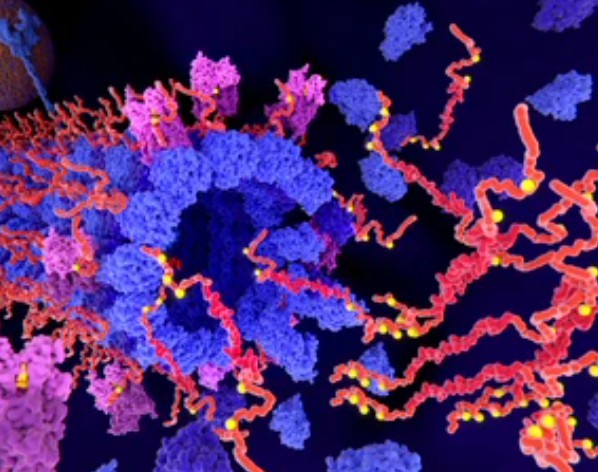
Creative Proteomics is a leading custom service provider in protein post-translational modification
(PTM) analysis. Based on advanced protein/peptide enrichment technology and mass spectrometry (MS) quantitative
techniques, we can help our global customers to perform reliable and fast PTM analysis, including protein
phosphorylation analysis. Our phosphoproteomics analysis service includes many experimental steps involved from
sample preparation to final analysis of the phosphorylated peptide, enabling effective identification of
phosphorylated proteins and peptides, accurate localization and prediction of phosphorylation sites, and changes in
phosphorylation status under different physiological conditions.
Platform technical features
Due to the low content and wide dynamic range of phosphorylated proteins in biological samples, enrichment of the
modifications is required to increase the abundance of phosphorylated proteins before quantitative analysis of
phosphorylated peptide samples using quantitative proteomics analysis. We offer a range of protein/peptide
enrichment strategies and use hydrophilic interaction chromatography (HILIC), immobilized metal affinity
chromatography (IMAC), titanium dioxide (TiO2)-based phosphopeptide enrichment for the enrichment of phosphorylated
peptides.
- Stepwise separation of monophosphorylated and polyphosphorylated peptides and separate MS analysis.
- Large-scale identification of enriched phosphorylated peptides by high-resolution MS.
- Place an order and send samples, and the one-stop service is completed.
Service offering
- Phosphopeptide enrichment service
Enrichment of
specifically isolate phosphoproteins or phosphopeptides prior to high-resolution liquid chromatography-tandem
mass spectrometry (LC-MS/MS) analysis is essential for successful phosphoproteomics analysis. To accelerate the
success of our customers' projects related to phosphoproteomics analysis, we offer a range of commonly used
separation and phosphopeptide enrichment strategies for customers to choose from.
- Quantitative phosphoproteomic analysis
service
Our phosphoproteomics analysis service is based on several quantitative proteomics methods,
including label-free, stable isotope labeling with amino acids in cell culture (SILAC), isobaric tags for
relative and absolute quantification (iTRAQ), and tandem mass tags (TMT).
- Phosphorylation site identification
service
Based on our highly sensitive HPLC-MS/MS pipeline, customized bioinformation analysis
strategies, and experienced informatics researchers, we are able to provide faster and more sensitive
identification of phosphorylation sites for various complex samples.
- Phosphoproteomics data analysis service
Based on
a powerful and novel bioinformatics platform, we are able to help our clients achieve efficient and rapid
analysis of phosphoproteomics data, providing the basis and clues for analyzing the molecular mechanisms of cell
and tissue function and disease. Our bioinformatics platforms and methods reduce the variability of analysis
processes, enabling the reproducibility of the analysis pipelines.
Bioinformatics analysis content
| Standard Bioinformatics Analysis |
Advanced Bioinformatics Analysis |
MS data quality control
Protein phosphorylation
identification
-Phosphorylated protein identification
-Phosphorylation site
identification
-Quality assessment of identification results
Protein
phosphorylation quantification
Functional annotation of phosphorylated
proteins
-Phosphorylated protein GO Annotation
-Phosphorylated protein KOG
Annotation
-Phosphorylated protein pathway metabolic pathway annotation
Motif
analysis of phosphorylated peptides |
Prediction of phosphorylated protein network
interactions
Phosphorylated protein domain
prediction
Phosphorylated protein subcellular localization |
Sample requirements
- Acceptable samples:
-Protein extracts (total protein > 500 mg);
-Cell samples (cell volume >
107);
-Tissue samples (animal tissue >2000 mg, plant tissue >1000 mg);
-Body fluid
samples (blood, urine).
-Microorganism dry weight > 200 mg.
- Sample shipping: Sufficient amount of dry ice for shipping, or consult our technical staff before sending
samples.
- Before the formal experiment, we will always test the samples you provide.
Service workflow

If you are interested in our services, please contact us for more details. Our
clients have direct access to our staff and prompt feedback on their inquiries.
References
- Taracha, Agnieszka, Grzegorz Kotarba, and Tomasz Wilanowski. "Methods of analysis of protein
phosphorylation." Postepy Biochemii 63.2 (2017): 137-142.
- Pérez-Mejías, Gonzalo, et al. "Exploring protein phosphorylation by combining computational
approaches and biochemical methods." Computational and structural biotechnology journal 18 (2020):
1852-1863.
Our products and services are for research use only.





